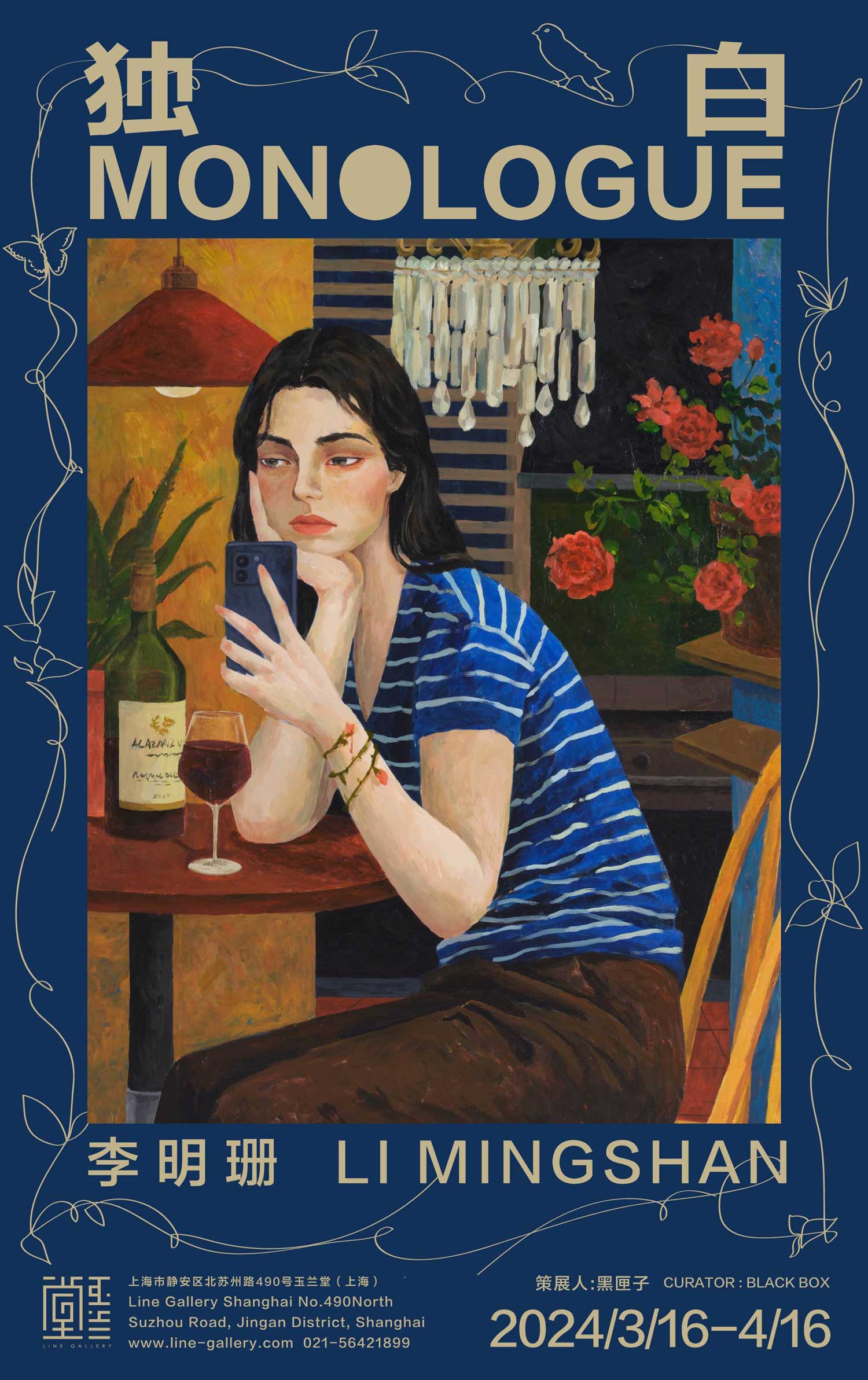展期 Period:
2024.3.16—2024.4.16
艺术家 Artist:
策展人 Curator:
地点 Venue:
玉兰堂 Line Gallery(上海)
前言 Foreword:
1941年,马洛伊•山多尔书写了《真爱》,40年后,他又用《尤迪特……和尾声》续写了这个关于个人与时代的爱情与孤独的故事。在马洛伊•山多尔去世之后,这两本书被合订成一本《伪装成独白的爱情》。当李明珊在书架上再次望向它时,她感到在此之中寓意着此次展览作品间隐藏的共性。
1941年,马洛伊•山多尔书写了《真爱》,40年后,他又用《尤迪特……和尾声》续写了这个关于个人与时代的爱情与孤独的故事。在马洛伊•山多尔去世之后,这两本书被合订成一本《伪装成独白的爱情》。当李明珊在书架上再次望向它时,她感到在此之中寓意着此次展览作品间隐藏的共性。
没有人是纯粹的单体,看似孤独的决然,都只是一种伪装,正如马洛伊•山多尔所使用的那看似永无止尽的情人的独白,也正如荒原之上,狼的孤嗥,看似凄凉,却是对同伴的呼唤。李明珊用一种独白的方式,将自己内心深处的情感向大家诚实展现,包括那些极其敏感的波澜。
所以,在这里所展现的,不是一部关于个人戏剧的外景,而是站在心灵舞台中央的内景。艺术家渴望着一种“真实”,这种真实不仅仅是艺术家所表现出来的真诚,更是一种对“真”的情感化的盼望与冲动。它显化为一种艺术家特有的绘画语言,以极其浪漫主义化的方式,呈现在观众面前。
In 1941, Márai Sándor wrote a book titled Az igazi, and continued this story about love and loneliness of individuals and the times in his another book Judit... és az utóhang 40 years later. These two books were bound as one titled Portraits of A Marriage after Márai Sándor passed away. Looking at this book again on the shelf, Li Mingshan sensed from it the commonality between the works to be displayed during this exhibition.
Such commonality is described by the artist as “monologue”, which is a kind of one-man show derived from plays. During such show, the actor faces the black auditorium, giving a long monologue, just like those many single portraits on show in this exhibition. In the room of inner heart, a small sofa and a small table lamp in Bohemian style suggests the wandering and loneliness of the soul and the nomadism by the campfire under the stars. The span between a designer and an artist shows that there is an emotional seed hiding in Li Mingshan.
No one is a pure monomer. All the seemingly lonely resoluteness is a kind of disguise, just like the seemingly endless lovers’ monologue used by Márai Sándor and also like the lonely howl of wolves in the wilderness which seems forlorn but is a call of their peers. Li Mingshan faithfully reveals her inner emotion in the form of monologue, including those extremely sensitive ups and downs.
Therefore, what is displayed here is not the outdoor scene for personal drama but the indoor setting in the center of the stage of mind. The artist always yearns for “truth”, which is not only the sincerity exhibited by her, but also the emotional yearning and impulse for “truth”. Manifested as a drawing language unique to the artist, it is presented in front of the audience in a highly romantic way.

